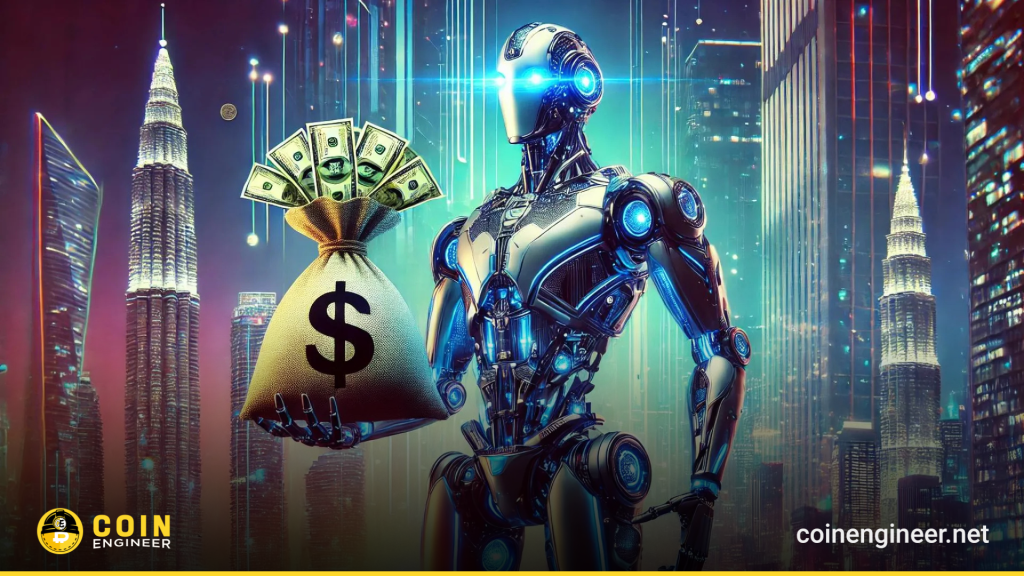Crypto markets are a fast-changing, volatile ecosystem that requires instant decisions. While traditional trading bots work according to specific rules, artificial intelligence (AI) powered trading agents are capable of continuous learning, analysis and strategy development.
These intelligent systems instantly assess market movements, perform sentiment analysis and identify the best trading opportunities with self-optimizing algorithms. However, developing a successful AI agent requires the right data, a powerful algorithm and a comprehensive risk management system.
What is an AI-Powered Crypto Trading Agent and Why is it Important?
Unlike traditional bots, AI-powered trading systems are data-driven, dynamically adaptive and continuously improve their decisions.
- Machine Learning (ML): Predicts possible future price changes by analyzing past market movements.
- Deep Learning (DL): Identifies trading opportunities by learning more complex patterns.
- Natural Language Processing (NLP): Evaluates market expectations by analyzing sentiment on social media, news and forums.
For example, large language models like ChatGPT can make predictions about the market by analyzing news headlines and social media sentiment.
Skills Required to Develop an AI-Powered Trading Agent
To develop a successful AI-powered trading bot, it is necessary to have both technical and financial knowledge. Here are the most critical skills:
- Machine Learning and Artificial Intelligence: Developing algorithms that can predict markets and optimize strategies.
- Programming and Data Analytics: Model building and data processing with tools such as Python, TensorFlow, Pandas.
- Finance and Trading Mechanisms: Knowledge of technical analysis, risk management and trading strategies.
- API Integration: Feeding AI models with live data from crypto exchanges.
- Blockchain and Onchain Analysis: Analyzing whale movements, smart contract activity and market liquidity.
Developing a powerful AI agent requires an interdisciplinary approach. By bringing together data engineers, financial experts and AI researchers, an optimally performing trading bot can be created.
Steps to Develop an AI-Powered Crypto Trading Agent
1. Strategy Identification
Every AI-powered trading agent should work within the framework of a specific strategy:
- Trend Following: Tracks bullish or bearish trends by analyzing price movements.
- Arbitrage Trading: Seeks to profit by exploiting price differences between exchanges.
- Market Making: Provides liquidity by using small spreads between buy and sell orders.
- News and Sentiment Analysis: Attempts to predict price movements by analyzing news feeds and social media interactions.
The chosen strategy determines how the AI model will work and what data it will process.
2. Data Collection and Preprocessing
The success of an AI trading agent depends on the accuracy and scope of the data it analyzes.
- Exchange Data: Price history, order book depth, trading volume and market liquidity.
- Onchain Data: Transaction activity on major blockchains such as Bitcoin and Ethereum, activities of large investors (whales).
- Market Sentiment Data: Data collected from social media, news sites and forums.
The collected data is enriched with technical indicators such as RSI, MACD, Bollinger Bands to enable the model to perform better analysis.
3. Training and Optimization of the AI Model
For the AI model to be efficient and successful, it needs to be trained correctly.
- Supervised Learning: Optimizes price predictions by training with historical market data.
- Reinforcement Learning (RL): Improves performance by learning to make decisions in simulated trading environments.
- Hyperparameter Tuning: Optimize the model’s learning speed, data processing capacity and accuracy.
A successful model should be able to make correct decisions by eliminating false signals.
4. Backtesting and Simulation
To test the success of the model, simulation should be done in past market conditions.
- Backtesting: Test the model’s decisions with historical market data.
- Performance Measures: Sharpe ratio (risk-adjusted return), maximum drawdown (worst loss scenario) are analyzed.
If a model only works well in bull markets, it should be retrained with a more balanced data set.
5. Live Market Deployment and Risk Management
Once the AI model is validated, it must be integrated into the real-time trading environment.
- Smart Order Routing (SOR): Determines the best price and liquidity between different exchanges.
- Low Latency Trading Engines: Executes orders in milliseconds, minimizing the risk of slippage.
- Dynamic Risk Management: Stop-loss orders, position size adjustments and filters analyzing market manipulations are applied.
AI agent can analyze flash crashes and fake orders to prevent market manipulations.
The Future of AI-Powered Crypto Trading
AI-powered trading systems offer great advantages to traders by providing speed, accuracy and adaptability in crypto markets.
However, data quality, algorithmic accuracy and continuous improvement are critical to the success of AI-based trading.
Major developments are expected in this area with blockchain technology, quantum computing and decentralized AI solutions. The future of AI in crypto trading will be shaped by regulations and technical innovations.
You can also freely share your thoughts and comments about the topic in the comment section. Additionally, don’t forget to follow us on our Telegram, YouTube, and Twitter channels for the latest news and updates.


